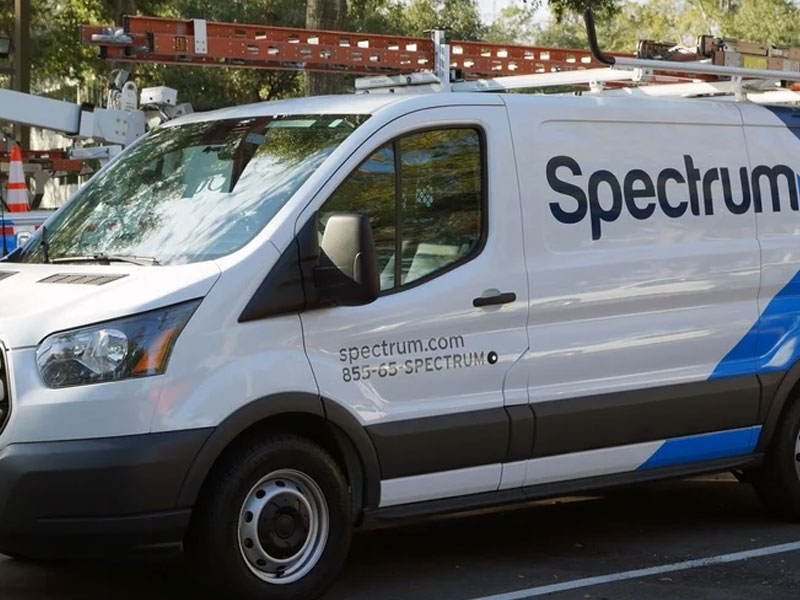Warming up to the Future of Retail: Customer Centric, Technology First
SOURCE: HTTPS://WWW.INDIANRETAILER.COM/
NOV 06, 2023
Deeper Dive—Charter sees advertising upside in streaming video strategy
SOURCE: FIERCEVIDEO.COM
SEP 24, 2021

Though it still only represents a small part of company’s consolidated revenue, Charter’s ad sales rose 65% to $411 million during the second quarter. (Charter Communications)
Hulu, Pluto TV, Tubi, Peacock, the Roku Channel are the names most tied to the ad-supported streaming market but Charter may creep up that list.
The cable provider still has a strong traditional video distribution business but it’s increasingly shifting into streaming and reaping the advertising rewards that can come along with it. Charter sells several lower-cost video packages and lets a lot of its customers access its linear video product through apps on third-party devices rather than through its cable set-top boxes. CEO Tom Rutledge, speaking today at a Goldman Sachs investor conference, said it’s lead to his company being one of the biggest—if not the biggest—streaming video providers around.
“Charter is actually the largest streamer in the country of video products because we sell our traditional video products on both Roku and Apple devices,” he said. “So, consumers don’t necessarily need to take a box from us; they can take an app from us. As an app-based provider, we have the highest rated video app in the country and the most streams of any video provider including any virtual video network operator.”
Rutledge said that Charter is still growing its linear advertising business and that’s partly because it’s delivering so much video on digital platforms where it can use targeted advertising to get higher CPMs. He said his company has a huge local ad sales force that can sell targeted advertising at the local level. “It encourages us to push low-cost video out to consumers supported by advertising.”
Indeed, aside from mobile, Charter’s advertising sales division saw the biggest increase in revenue during the second quarter. Though it still only represents a small part of company’s consolidated revenue, Charter’s ad sales rose 65% to $411 million.
While Charter continues to explore new ways to sell video products to its customers, it’s still managing to keep its traditional video subscribers low relative to peers like Comcast and AT&T. Charter lost 50,000 video subscribers during the quarter after dropping 63,000 residential customers but adding 13,000 business customers. The company ended the quarter with 16.01 million total video subscribers.
If Charter can continue to moderate its video subscriber losses by offering lower-cost packages outside of the traditional pay TV distribution paradigm, than it can likely continue to rapidly grow its advertising revenues.
LATEST NEWS
Augmented Reality
Hi-tech smart glasses connecting rural and remote aged care residents to clinicians
NOV 20, 2023
WHAT'S TRENDING


Data Science
5 Imaginative Data Science Projects That Can Make Your Portfolio Stand Out
OCT 05, 2022

SOURCE: HTTPS://WWW.INDIANRETAILER.COM/
NOV 06, 2023
SOURCE: HTTPS://DIGIDAY.COM/
SEP 22, 2023
SOURCE: HTTPS://WWW.EXCHANGE4MEDIA.COM/
AUG 21, 2023
SOURCE: HTTPS://WWW.SCIENCEDAILY.COM/
AUG 14, 2023
SOURCE: HTTPS://WWW.EY.COM/EN_IN/FUTURE-CONSUMER-INDEX/CONSUMER-IS-THE-KING-CONSUMER-EXPERIENCE-IS-THE-PRIORITY
JUN 30, 2023
SOURCE: HTTPS://WWW.PITCHONNET.COM/MARKETING-MOMENTS/HOW-CREATIVE-TECH-IS-SCRIPTING-A-NEW-FUTURE-IN-INDIAN-ADVERTISING-32957.HTML
JUN 27, 2023
SOURCE: HTTPS://WWW.BUSINESSINSIDER.IN/BI-INTELLIGENCE/NEWS/CHATGPT-AND-GENERATIVE-AI-IN-MEDIA-AND-ADVERTISING-WITH-USE-CASES-SET-THE-BATTLE-FOR-HEARTS-AND-MINDS-BEGINS/ARTICLESHOW/100286369.CMS
JUN 26, 2023
SOURCE: ARIN WAICHULIS II HTTPS://9TO5MAC.COM/2023/01/22/APPLES-ICONIC-1984-SUPER-BOWL-AD-AIRED-ON-THIS-DAY-39-YEARS-AGO/
JAN 22, 2023